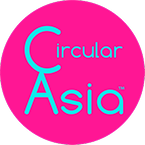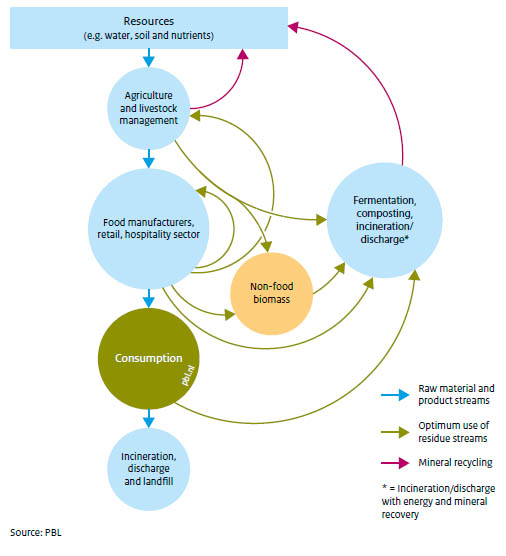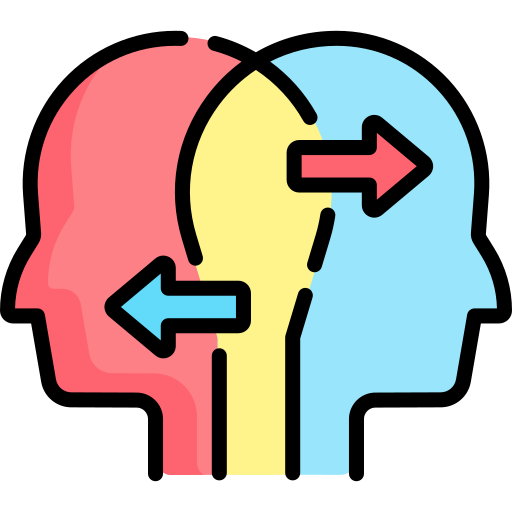Food
Food
Food, a substance consisting essentially of protein, carbohydrate, fat, and other nutrients used in the body of an organism to sustain growth and vital processes and to furnish energy. The absorption and utilization of food by the body is fundamental to nutrition and is facilitated by digestion. Plants, which convert solar energy to food by photosynthesis, are the primary food source. Animals that feed on plants often serve as sources of food for other animals. (Source: Encyclopaedia Britannica)
A Circular Food System
There are three requirements for a circular food system. Firstly, in a circular economy, natural resources must be effectively used and managed. Such resources include soil, water and biodiversity, but also minerals. These resources are essential to be able to produce renewable resources.
Secondly, the optimum use of food is important. Reducing food waste is an important starting point in this context, as is a diet with less highly processed food, or more vegetable protein and less animal protein. Also important is a reduced use of natural resources and less environmental pressure.
Finally, it is important to make optimum use of residue streams, such as tomato stalks, beet pulp and stale bread. In this way, as little biomass as possible will be lost.
(Text and image from ‘Food for the Circular Economy‘, published by PBL Netherlands Environmental Assessment Agency, 2017)
Knowledge Centre
This section includes reports covering: food & the circular economy, sustainable food systems, food innovation, food waste, proteins, technology, tools, images and infographics.
References:
- Food: Freepik from Flaticon
- Knowledge Centre: Freepik from Flaticon
- Information: CleanPNG
- Video: Freepik





